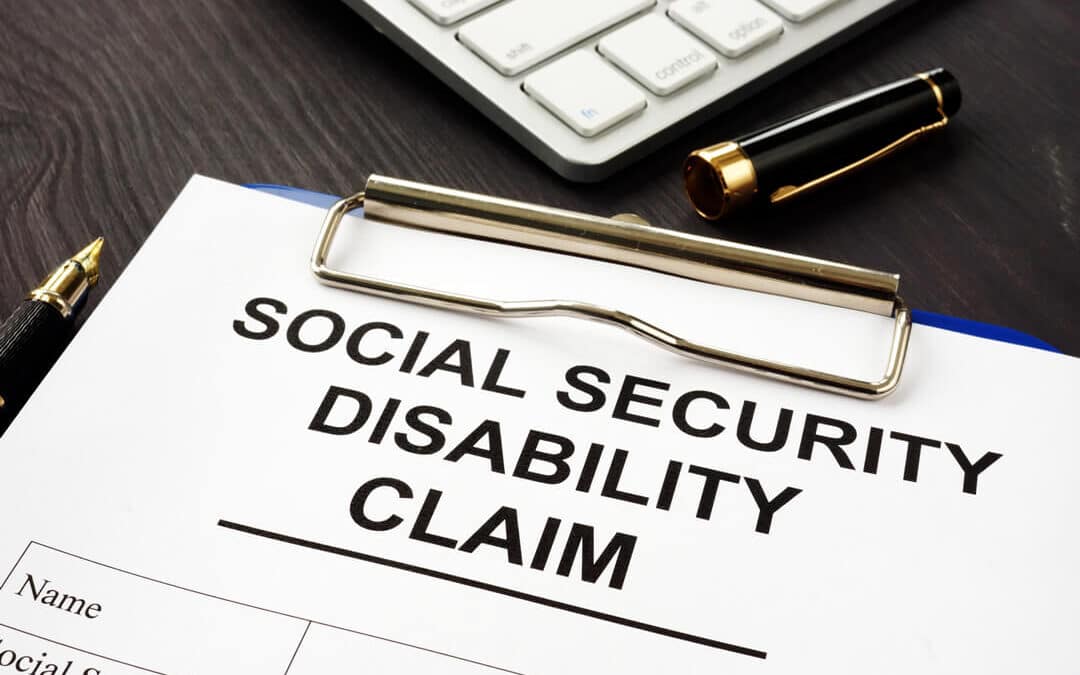Worried about applying for Social Security disability benefits (SSDI) because of all the paperwork and red tape? That’s completely normal, but don’t let it stop you from getting the benefits you and your family need.
Here are some tips to help improve your chances of approval:
Understanding Social Security Disability Benefits
When applying for disability benefits, it’s first helpful to understand what the Social Security Administration (SSA) is looking for to consider you disabled and eligible for benefits.
Since SSDI helps people who can’t work because of health problems (physical or mental), you first need enough “work credits” from your past jobs where you paid Social Security taxes. The credits required depend on your age when your medical condition began. You can check the work credit requirements by age on the SSA’s website.
If you have enough credits, the SSA uses five steps to decide if you qualify for benefits.
First, they check to see if you are currently working and earning below what they refer to as the Substantial Gainful Activity (SGA) level. Earning above the SGA limit usually disqualifies you from disability benefits. If you earn below SGA, SSA will determine whether your medical condition is severe enough to significantly limit basic work activities like standing, walking, or thinking clearly. Your condition must have lasted or be expected to last at least 12 months or be expected to result in death.
The SSA then checks if your condition is in their Blue Book Listing of Impairments, which outlines conditions and the medical criteria required to qualify as disabled under that condition. If your condition is not listed, they will assess whether it matches a listed one in severity. If not, they’ll evaluate whether the limitations of your medical condition will allow you to do any of your past work or any other type of work based on your age, education, and experience.
The SSA’s disability approval process can seem overwhelming, but there are several steps you can take to strengthen your case.
Gather and Submit Medical Records Yourself
While the SSA will ask for your medical providers’ information, the SSA representative handling your case may not do a thorough job of getting all the medical records needed to prove your disability claim. It is best to collect and submit the documents yourself. Get copies of all doctor’s notes, treatment plans, and test results, and submit them with your application. You can even ask your doctors to write letters and fill out forms explaining how your condition affects your daily life—the more documentation, the better your approval chances.
Submit a Detailed and Complete Application
You need to fill out every section of your application thoroughly and accurately. Do not skip any questions and provide as much detail as possible in your answers. If possible, keep track of how your disability affects your daily activities so you can give specific examples. Also, include your complete work history and explain which job duties you can no longer perform because of your disability.
Stay in Touch with the SSA
Respond quickly when the SSA contacts you about your application. They may need more information or documentation to process your claim.
Be Honest and Consistent
Always provide truthful, consistent information in your application and communications. Don’t exaggerate or downplay your condition, as this could hurt your case. Keep your story straight across all forms and conversations.
Consider Getting Legal Help
You don’t have to handle this alone. An experienced disability attorney can help gather medical records, complete your application correctly, and manage SSA communications. They’ll guide you through the initial application and appeals process if needed.
An experienced disability attorney can help reduce your stress and boost your chances of approval.
If you would like the help of a disability attorney, contact Brock and Stout for a free evaluation to see if we can help you apply for Social Security disability benefits.

